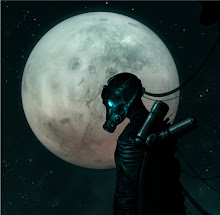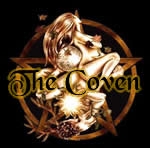The Meaning of Witchcraft by GERALD GARDNER
Part 4
Part 4

It is evident from early pictures and descriptions (the earliest being the famous cave paintings found at Ariege in the Caverne des Trois Freres, done by men of the Stone Age), that the High Priest who was the god’s representative sometimes wore a ritual disguise, consisting of a head-dress bearing the horns of a stag or a bull, and a kind of robe of animal skins; sometimes, too, a mask which concealed his features. This custom seems to have been more particularly followed at the big Sabbats, when many people gathered outside the circle who were not actual initiates of the witches’ mysteries, but came “for luck” (i.e. for the blessing of the Old Gods) or simply to enjoy themselves. It made the proceedings more impressive, and at the same time safer, if the god’s representative was masked and disguised, so that he could not be recognized. The horned figure, seen dimly by moonlight or by the light of torches, would have seemed to the outsiders to be a supernatural being, and the initiates would not have undeceived them. When only initiates were present, there was less need for the ritual disguise, so the custom of wearing it has tended to fade out.
It will be seen that witchcraft is a system involving both magic and religion. This in itself is an indication of great age, because in primitive times magic and religion were closely interrelated. The priest was also the magician, and the magician had perforce to be a priest. Indeed, when one comes to consider it, many religious rites today are directed towards ends, which might be called magical. What is the essential difference, for instance, between prayers for rain, or for a good harvest, and the old fertility rites, which were directed to the same end? And why must a King or a Queen undergo the ritual of Coronation? With regard to the Church’s prayers and a fertility rite, the difference would seem to lie in the latter working on the principle that “God helps those who help themselves,” whereas the former is content with petition. The question of the necessity of Coronation ritual raises the whole idea of the Divine King or Queen which has engaged the attention of anthropologists for many years. The idea that there is any connection between religion and magic may be indignantly repudiated by some orthodox believers; nevertheless, both spring from the same root.
As I explained in my previous book, there are certain secrets of the witch cult that I cannot by reason of my pledged word reveal; but many people write to me saying, “You said in your book, Witchcraft Today that all the ancient Mysteries were basically the same; so as we all know what these ancient Mysteries were, we know exactly what the witches’ secrets are. So why don’t you write another book telling everything?”
Now, while the ancient authors who were initiated into a number of the Mysteries agree that they were all the same basically, and there is a certain amount of agreement among modern authors about what their secrets were, I doubt very much if any of them realizes the reason behind them, “what made them work,” in fact; and what makes things work is the witches’ secret. I think that this was probably the practical secret of the ancient Mysteries also.
However, I am not going to be drawn in this way to break my word; a statement, which will, I hope, result in a saving of notepaper and stamps on the part of some of my more aggressive correspondents. Certain of the present-day enquiries of psychical research, archaeology, anthropology, and psychology are beginning to converge in a manner that is gradually revealing facts about ancient beliefs and their effect upon human evolution which have not been realized before. It is my hope that this book will be a useful contribution to these lines of enquiry, and perhaps assist in their convergence.
Upon the 1st March, 1956, Major Lloyd-George, then Home Secretary, as a result of a question asked in the House of Commons, said that black magic was an offence in common law. When pressed by M.P.s to define black magic, he said, “It is the opposite to white magic (at which there was laughter and ironical cheers) which is performed without the aid of the devil, so I assume the other is done with his aid.”
If this were accepted as a definition, then authentic witchcraft is certainly not black magic, because witches do not even believe in the devil, let alone invoke him. The Old Horned God of the witches is not the Satan of Christianity, and no amount of theological argument will make him so. He is, in fact, the oldest deity known to man, and is depicted in the oldest representation of a divinity which has yet been found, namely the Stone Age painting in the innermost recess of the Caverne des Trois Freres at Ariege. He is the old phallic god of fertility who has come forth from the morning of the world, and who was already of immeasurable antiquity before Egypt and Babylon, let alone before the Christian era. Nor did he perish at the cry that Great Pan was dead. Secretly through the centuries, hidden deeper and deeper as time went on, his worship and that of the naked Moon Goddess, his bride, the Lady of Mystery and Magic and the forbidden joys, continued sometimes among the great ones of the land, sometimes in humble cottages, or on lonely heaths and in the depths of darkling woods, on summer nights when the moon rode high. It does so still.
From time to time the public have been treated to various highly-colored and highly unconvincing “revelations” in the popular Press and elsewhere upon the subject of “Black Magic,” “Satanism,” and similar matters, and occasionally these have been linked with witchcraft. Let me state right away that I personally maintain an attitude of thorough-going skepticism towards these things, and that even if they do exist I do not consider them to have any relation to the survival of the witch cult. Alleged “confessions,” especially where witchcraft is mentioned, bear ample internal evidence of their own meretriciousness, in that they are obviously modeled upon sensational thrillers and reveal no knowledge whatever of genuine witch practices.
The real thing is deeper hidden than this. People, especially country people, are reluctant to talk about it; but no one, I think, can study folklore in this country for long without becoming convinced of the amazing vitality and tenacity of old beliefs.
Where the town-dweller usually goes astray in his conclusions about the witch cult is that he has been fed mentally upon the alleged “revelations” mentioned above, or upon works that associate witchcraft with some fantastic belief vaguely known as “Satanism,” with the implication that it is, or was, a cult of evil and nothing else. I submit that this is an unreasonable view, and has been promulgated by persons who possess no qualifications beyond a bent for sensationalism or an outlook blinded by religious bigotry. The countryman and countrywoman preserve a belief through the centuries because they think it is some use to them, or because they derive some satisfaction from it. Of course, the benefit they derive from the belief may not always seem to us to be highly ethical. Nevertheless, no one but a maniac would deliberately cultivate evil for its own sake.
The foundation of magical beliefs, of which witchcraft is a form, is that unseen Powers exist, and that by performing the right sort of ritual these Powers can be contacted and either forced or persuaded to assist one in some way. People believed this in the Stone Age, and they believe it, consciously or not, today. It is now well known that most superstition is in fact broken-down ritual.
The unseen Powers that have interested man most in his early history have been the powers of fertility and of contact with the spirit world; of Life and Death. These are the elementary powers that became the divinities of the witches, and their worship is as old as civilization itself. The meaning of witchcraft is to be found, not in strange religious theories about God and Satan, but in the deepest levels of the human mind, the collective unconscious, and in the earliest developments of human society. It is the deepness of the roots that has preserved the tree.
Details:
The Meaning of Witchcraft
GERALD GARDNER
First Published in 2004 by
Red Wheel/Weiser, LLC
York Beach, ME
With offices at:
368 Congress Street
Boston, MA 02210
Originally published in the U.K. in 1959 by Aquarian, London
Library of Congress Cataloging-in-Publication Data
Gardner, Gerald Brosseau, 1884-1964
The meaning of witchcraft / G.B. Gardner.
p. cm.
Originally published: 1st ed. London: Aquarian Press, 1959.
Includes bibliographical references.
ISBN 1-57863-309-5
1. Witchcraft. I. Title.
BF1566.G3 2004
133.4’3—dc22









































No comments:
Post a Comment